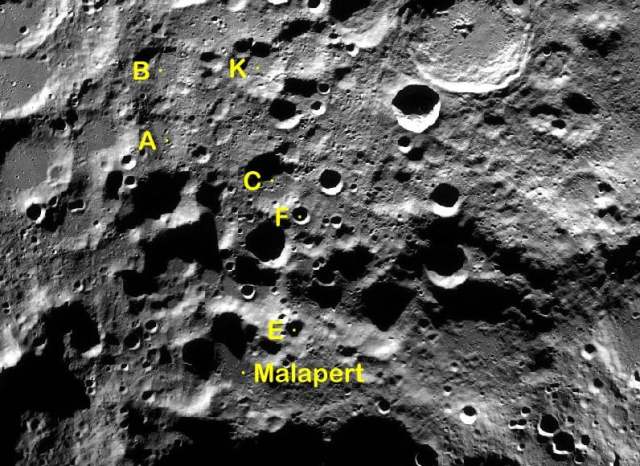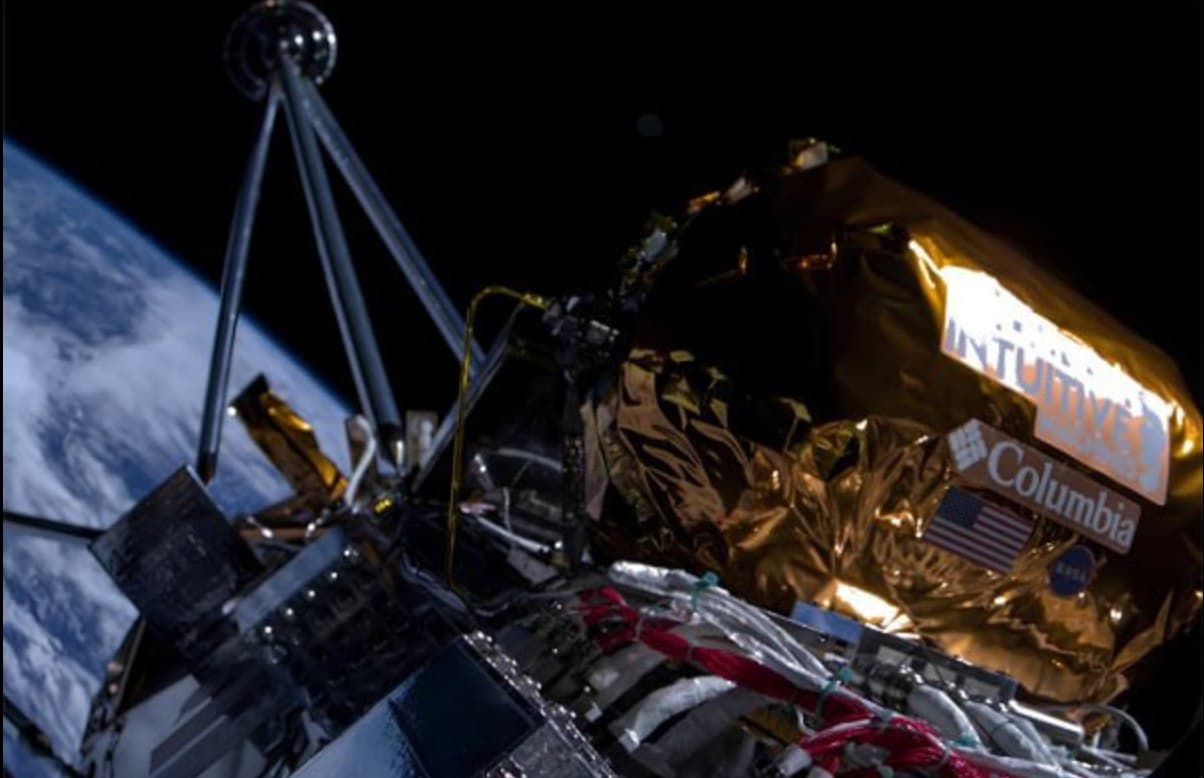The new successful landing allowed the United States not only to return to Selena after a 52-year hiatus, but also for the first time in the history of terrestrial astronautics to reach a zone close to the south pole of the Moon — a result that the media recently mistakenly attributed to the Indian lander.
Today. On February 23, 2024, at 2.23 Moscow time, the Odyssey spacecraft of the private American company Intuitive Machines was able to gently land at 80 degrees south latitude of the Moon, the closest to its south pole of all terrestrial vehicles. At the same time, immediately after landing, the signal was lost for a while, but then the connection was restored.
The lander itself is a hexagon, with solar panels, with a power of 200 watts. It does not have an internal heating module for a two-week lunar night, which makes its long-term operation on the Moon unlikely. Unlike all previously landed vehicles, before landing, Odyssey dropped a special micromodule for shooting called EagleCam onto the surface of the Moon. He tried, for the first time in history, to record a landing on the Moon from a third person, and transmit its video over Wi-Fi to the module itself. He, in turn, transmitted the video to Earth.
The device itself is a deep reworking of the "Morpheus Project", a NASA development from the 2010s. It is fundamentally different from the earlier automatons that landed on the Moon with engines. His VR900 uses liquid oxygen and methane, cryogenic fuel components that are usually avoided in interplanetary missions because they evaporate into vacuum over time (hydrazine—based fuels are more reliable in this sense). However, methane and oxygen are slightly toxic (and hydrazine is highly toxic), and it is cheaper to work with them. The engine does not have a turbopump feeding it: it would make the mission more expensive and less reliable. Instead, the fuel is supercharged into the VR900 from a separate container with compressed helium.
Soft landing is an extremely difficult task. In this century, it has been tried about a dozen times and in most cases unsuccessfully. From the first time, everything worked out only in China. Attempts to land European, Israeli, Japanese and Russian vehicles were unsuccessful: only one of the Japanese vehicles was able to land gently, but could not work properly after that. The lander of another American private company failed in January 2024. Therefore, the landing of the Odyssey is a major success for a private company. It is worth noting that she is planning a second landing on Selena in 2024.
The total initial mass of the Odyssey is 1,900 kilograms, of which only 100 kilograms of payload. It includes more than a dozen instruments, of which half a dozen belong to NASA, and the rest are private customers. Instruments on board cannot effectively determine the presence of water in the ground (there is no neutron spectrometer), the most interesting load in this mission is mainly limited to cameras, as well as an experimental module for providing radio transmission and navigation on the Moon (being worked out for manned missions).
A relatively new technology that was planned to be tested during the lunar landing was the removal of dust using an electric field. Earlier, technologists tested this on board the ISS, but the lunar dust during the landing of the lander has a different density and parameters than in the tests on the ISS. As Naked Science wrote earlier, moon dust is a major practical problem, which caused people to poison the air from their spacesuits when flying to the moon. This did not lead to tragic consequences due to the short duration of the missions. New missions to the Moon in the future imply a long stay there, which makes automatic dust removal very relevant.
On the main part of the lunar surface, the upper layers contain a little water. Water ice in serious quantities here can only be inside lava tubes, huge caves with a diameter of hundreds of meters to kilometers. Although the entrances to them overlook the lunar surface, it is very difficult to explore them, since this is actually a climbing task, and existing moon suits are poorly suited for such events. Vending machines are even worse for them.
At the same time, the circumpolar regions of Selenium had previously shown radar reflections indicating large surface deposits of water ice in areas of eternal shadow, covered only by thin dust. As Naked Science has already noted, many photos of such zones show landscapes typical of areas of the earth's permafrost. The detection of water on the Moon would have great theoretical (so you can find out the way of its formation) and practical (water is needed for bases) significance. However, no one has landed near the pole so far: Earth science realized the presence of water here only in the XXI century, and most of the landings on the satellite were made half a century ago.
The Odyssey device of the private American company Intuitive Machines was the first to land in this zone. Earlier, the media attributed this achievement to the Indian lander. But "Chandrayan-3" in August 2023 reached only 69 degrees south latitude, and "Odyssey" landed in the crater Malapert A, with a diameter of 24 kilometers.
 |
| The Malapert A crater is shown by the letter in the upper left corner. |
| Source: Wikimedia Commons |
It is located at 80 degrees south latitude, that is, twice as close to the pole as the landing point of the Indian spacecraft. The area of this crater was chosen because it is perhaps the flattest of the landing sites at the pole: the terrain here is much more rugged than at lower latitudes. In areas with noticeable slopes, landers may have trouble. The Japanese SLIM lander, which tried to land on a slope of 15 degrees on January 19, eventually did so, due to an error in the operation of the engines, upside down, which did not allow it to work fully.
In addition, the crater is not so far from the five-kilometer Malapert mountain. She has an exceptionally good location: It is in line of sight from both Earth and Shackleton Crater, at the south pole of the moon. Therefore, earlier it was proposed to place a radio relay capable of providing radio communication for a manned expedition to the south Pole. This is being considered for the American lunar mission Artemis III, which will take place in the second half of the 2020s.

